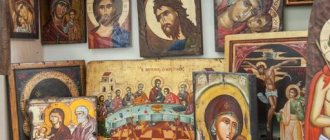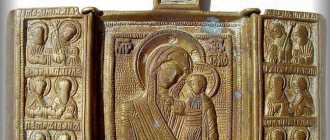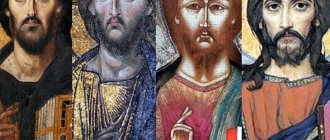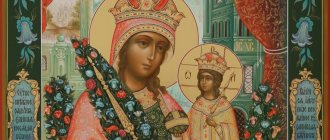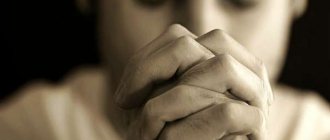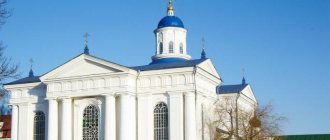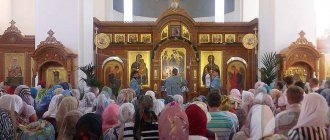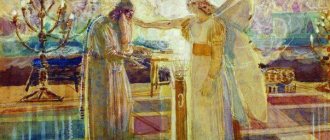Holy Mount Athos and Mother of God
Athos took the place of the leading icon-painting center after the fall of Byzantium. Here icon painters persecuted by the current government gathered, monks began their service to God, and unique communities were created.
There are many rumors about the story that explains the patronage of the Mother of God. It dates back to the year 48, when the Mother of God went to the island of Crete to see Saint Lazarus, who was resurrected by the Lord. During the trip, a storm broke out at sea, the ship was carried to Mount Athos, where the travelers had to stop. The island was inhabited by pagans, but the Mother of God managed to turn their gaze to the Orthodox faith when she announced the words from the Gospel. The Iverskaya monastery was organized on the territory of Athos.
The mother turned to the Lord with a request to grant her Mount Athos. He answered her from Heaven, agreeing that Saint Athos should become the Mother’s lot, as well as a place where all those who thirst could find peace and comfort.
And Russia - since the 17th century
Iveron Icon of the Mother of God.
Russia, 19th century. Image from the website tihvinskiy.ru The first copy of the Iveron Icon was brought to Russia in the middle of the 17th century. In 1647, Archimandrite Pachomius of the Athonite Iveron Monastery came to Moscow to collect donations and met the abbot of the capital's Novospassky Monastery, Nikon, the future patriarch, who was so impressed by the story about the monastery and the miraculous icon that he asked to make for him a copy of the Iveron Icon "measure" in moderation."
The image was painted by the icon painter “Iamblichus Romanov”. In the fall of 1648, the icon was solemnly greeted in Moscow, at the Resurrection Gate. The Russian celebration in honor of the Iveron Icon on September 13 (September 26) is dedicated to this event.
Description of the icons of Our Lady of St. Athos
Due to the fact that Athos became the earthly destiny and place of patronage of the Mother of God, the main part of the icons that were created on the island are dedicated to her. These are icons made in the true Athonite technique, as well as modern works that combine different approaches to icon painting.
"Abbess of Mount Athos"
The date of creation of the icon is determined by the 20th century. It was written by order of the Greek governor and confirms the fact that the Mother of God became the patroness of the monasteries of Athos. On the icon, the Blessed Virgin is depicted in the form of an abbess, that is, an abbess. The figure of the abbess rises above the mountain; believers, monks and those who live on the Athos peninsula are depicted nearby. In front of the icon they pray for health, the well-being of families, and ask for blessings.
"Passionate"
This icon is painted in the popular Hodegetria style. The mother holds the baby in her arms, bowing her face to his face. The drama of the plot does not immediately become clear. The baby holds his mother's hand, his face is distorted with animal fear. He seems to be turning away from the signs of the cross, which are located at the top of the icon. He does not understand what the cross and spear in the hands of angels mean. For believers, the meaning of these drawings is clear. These are instruments of the passions, which is why the icon is called “Passionate”.
"Iverskaya"
“Iverskaya”, or “Vratnitsa” is an icon that is closely associated with the protection of the holy mountain from various invasions and troubles. According to legend, which is passed down from mouth to mouth, the mountain will stand as long as this painting exists.
In the central part of the icon, the Mother of God appears with a noticeable bloody wound on her chin. This wound was inflicted by the sword of a famous pirate, who, according to legend, immediately repented of the act and took monastic vows. He became a monk of the Iveron Monastery. The face of the Mother of God is filled with pain and suffering, but not because blood has appeared on her face, but because of the suffering of people, whom she looks at with longing. Before the face they ask for forgiveness for unseemly actions, give thanks and talk about their suffering.
"Economissa"
“Economissa”, or “House-Builder” is located inside the famous Lavra of Athanasius of Athos. The history of the creation of this image goes back to the 9th century. According to legend, Saint Athanasius, who organized a monastery on the top of the mountain, was forced to leave it because of the famine that threatened his monks. Saint Athanasius was the last to leave the monastery. As he was descending, a woman came up to meet him. She asked him why he was leaving such a wonderful place. After his explanations, the woman ordered to go back. She promised that she would be the housekeeper of the monastery and do everything necessary for the monks.
Afanasy listened to her advice. When he returned, he found that the monastery's storerooms were filled with food and water. Gradually all the monks returned to the monastery, and the plot of what happened became the reason for the creation of the image of the housekeeper on the icon of the same name.
"Tricherussa"
“Three-Handed” is a unique icon that has its own history. It is associated with the name of St. John of Damascus. John lived under the ruler of the Damascus Caliph. Syria at that time was occupied by the Saracens, and severe persecution began against Christians. Because of the intrigues and intricacies within the caliphate, the ruler believed that John had committed high treason. For this he cut off his left hand. John turned to the Mother of God in tears, he asked to heal him, stop the persecution of the Orthodox and restore justice. Weakened by tears and pain, he fell asleep. The Mother of God appeared to him in a dream and told him that he was healed. The hand actually turned out to be whole and unharmed.
As a sign of worship and respect, John of Damascus created an icon with an image in the style of Hodegetria. At the bottom he added a left hand made of silver, copied from his own hand. Because of this, the image was called “Three-Handed”.
"Ktitorissa"
The icon was hidden by the monk Sava during the Arab invasion, which dates back to the 10th century. The painting was preserved behind the altar, which is why “Ktitorissa” is often called “Altarmaiden”. Savva lowered the icon deep into the ancient well on ropes along with a lit lamp.
Savva was enslaved by the Arabs and taken away from Mount Athos. Savva managed to return only after 70 years. After returning, he showed where the icon was kept. The monks pulled out the ropes and found that she remained safe and sound, with a lamp burning in front of her in the same way as 70 years ago.
"Worthy to eat"
A unique icon, which is called the treasure and pride of Karyes. Once, during the all-night offering of prayers, a traveler asked to come to the monk’s cell. He wanted accommodation and food. The monk let him in and began to sing traditional hymns in front of him. The traveler stopped him, saying that the people around him sang the hymn differently. He inscribed the words of the hymn on a stone tablet, the beginning was the phrase “It is worthy to eat.” Then the traveler suddenly disappeared, the monk realized that the Archangel Gabriel himself was visiting his cell.
The icon depicts a mother with a boy. Jesus is depicted as a playful baby, reaching for the scroll that the Virgin Mary is holding in her hands. This icon is characterized by a gold background.
"Akathist"
The “Akathist” icon is known under different names:
- "Greetings to the Mother of God";
- "Praise";
- “Myrrh-streaming.”
It is included in the iconostasis of the left side chapel of the cathedral church in Dionysiata. According to religious sources, this is one of the paintings written by the Evangelist Luke. The base is made with wax mastic, the features of the face are greatly blurred due to myrrh.
It is known that the icon was stolen by pirates at the beginning of the 16th century, then it was returned by them and again stolen by robbers from Turkey. The canvas, sooner or later, constantly returned to the Dionysian monastery. Thanks to the return of the icon, each time additional territories were added to the lands of the monastery, donated by pirates and robbers to the monastery for the deed committed.
"Gerontissa"
The miraculous icon is located in the Pantokrator monastery, located on the mountain of the Holy Land. The exact time of origin is unknown. Researchers suggest that this is a gift from the Byzantine Emperor Alexy II. According to other sources, “Gerontissa” is a copy from the mosaic fresco “Quick to Hear,” which is located in the Constantinople monastery. The first miracle of the icon is associated with the choice of location for construction. Initially, the builders chose another site for construction, but each time their tools disappeared. This continued until they arrived exactly where the construction site was planned. This action is explained by the patronage of the Mother of God and her own choice of place for the construction of the walls of the monastery.
The icon depicts the Blessed Virgin at the moment of earnest prayer. When creating lists, it is necessary to depict white clothes, as well as the design of a silver robe, which gives a special shine.
"Quick to Hear"
“Quick to Hear” is an icon that is located in the Dokhiar monastery. This is a large canvas, which is often taken out into the street when performing various Christian rituals. The central field of the icon depicts a mother and son with golden halos around their heads. The clothes are painted in burgundy and terracotta shades, indicating that they belong to the royal family. "Quick to Hear" is a valuable copy from a Constantinople mosaic fresco. Now the icon has been completely restored and covered with glass to prevent damage to the ancient material.
"Sweet Kiss"
The icon is located in the northeastern part of the main hall of the New Skete. The central field of the icon depicts a mother holding Jesus in her right hand. She hugs her son tenderly, bowing her head protectively. The sad gaze of the mother is directed away from the child. She seems to be sad about his future fate and looks at the believers, for whom she will have to sacrifice her son. A special feature of the icon is the expression on the baby’s face. Icon painters rarely depict Jesus as a playful, affectionate boy. Here he tries to touch his mother and kiss her, which is so typical of ordinary children. The plot becomes complete when the gaze stops at the two angels depicted at the top.
Researchers believe that the archangels are Michael and Gabriel; they came as forerunners of upcoming events. They hold the trumpets and carefully watch the human baby, who is destined to be the savior of humanity. The type of iconography in which the image is made dates back to the second half of the 14th century. It was then that icons of this kind became widespread in Crete and Macedonia.
"The Tsaritsa"
“The All-Tsarina”, or “Pantanassa” is the shrine of the Vatopedi Monastery. The date of creation of the icon dates back to the 18th century. Here the Mother of God appears as a ruler, capable of performing Divine deeds. Before the face of the Mother of God, who holds the grown-up Jesus in her arms, people bow their knees with requests for the cure of serious oncological diseases. People come here to ask for the health of loved ones, family well-being, as well as protection from all kinds of troubles and wars.
The Mother of God is dressed in purple clothes, her head is crowned with a purple veil with a golden tint. A silver halo is drawn around the head. Archangels stand behind the left and right shoulders. Many researchers recognize them as Archangel Michael and Archangel Gabriel. As for Jesus, on this canvas he appears as the future Lord, his finger points to the believers, it is possible that at this moment he forgives someone’s sins.
"Mammal"
The icon is located in the chapel of St. Nicholas, which belongs to the monastery of the prophet Elijah. This is a rare type of iconography, where the Virgin Mary holds a baby in her arms, slightly turning her body to the right. She is depicted feeding a baby. The lower part of the icon contains medallions with the faces of Nicholas the Wonderworker and John the Baptist.
On the top of the icon there are celestial creatures. Angels with wings hold a golden crown over the head of the Mother of God. The image dates back to the 19th century; people pray in front of it for health and prosperity; women who are unable to conceive come here. They ask the Mother of God to give them the long-awaited child.
"Hodegetria"
The classic image of "Hodegetria" has been known since the beginning of time. It belongs to the Xenophon school of icon painting. The icon is kept in the cathedral church of the Vatopedi Monastery of Athos. The central field depicts a mother and baby. Their faces are blurred, their clothes are hidden with silver and gilded inserts. The name “Hodegetria” is associated with many miraculous events, which are described in detail in religious sources from different times.
The name of the author who created the icon is not known. It is reliably known that lists created by the hand of the Evangelist Luke already existed on earth. Mandatory when performing “Hodegetria” is the image of Jesus with a blessing gesture. The image of the Mother of God on the icon is waist-length. Despite the fact that the icon is dedicated to the Blessed Virgin Mary, the center always remains the baby Jesus.
"Comfort"
“Consolation” or “Consolation” is the Vatopedi shrine, resting in the monastery on Mount Athos. Once upon a time, near the monastery, Tsarevich Arkady fell from a mountain into the sea waters. The miraculous appearance of the Mother of God saved Arkady from death and transported him to the shore of the peninsula. Holy King Theodosius, the father of Arkady, presented the Vatopedi monastery with generous gifts, among which was the icon “Otrada”.
The central field of the icon depicts the face of the Mother of God; it is turned to the right, signifying the gaze of the Blessed Virgin addressed to the abbot of the Vatopedi Monastery in 807. This appeal allowed the monks of the monastery to avoid the attack of robbers and save their valuables.
After the significant event, the Vatopedi icon was painted, which began to be called “Consolation” or “Consolation”. Those who want to achieve blessings, thank their family and friends, and strengthen their own faith bow their knees before the face of the Mother of God.
Icon in two frames
Iveron image of the Blessed Virgin Mary.
Iveron Monastery, Athos. Photo from the site sobormihail.cerkov.ru The Iveron icon is quite large - 137 x 87 cm. It has two frames that can be exchanged from one to the other. More ancient, chased, made by Georgian craftsmen in the 16th century. At the bottom there is an inscription in Georgian:
“Queen, Mother of the philanthropic God, Immaculate Virgin Mary, have mercy on the soul of my master, the great Kaikhosroi Kvarkvarashvili, and I, Your servant and deprived of all strength, worthy of pity, Ambrose, thank You, who deigned me to fetter this and decorate the holy image of Your Portaitissa. Accept this little insolence of mine as a sacrifice from me, a sinner, and save the rest of my life without sin.
And at the hour of the exodus of my pitiful soul, help me, scatter all the lists of my sins. And place me, a sinner, at the throne of Your Son and God and His beginningless Holy Father and the Holy Spirit. Now and ever and unto ages of ages. Amen".
On the back of the icon is an image of a cross with the monogram “IC XC NI KA” and four letters “X” - an abbreviation of the phrase “Christ gives grace to Christians”, in which in Greek all words begin with X.
A later salary on the prototype of the “Goalkeeper”. On the margins of the icon are enamel images of the apostles. On the old salary they are waist-length, and on the new one they are full-length. Like many miraculous icons, Iverskaya is decorated with numerous donations: crosses and coins.
Fragment of the Iveron Icon of the Mother of God with a legend. Image from the site hram-kupina.ru
There is an Athonite legend, according to which, one day the Iveron monks experienced a shortage of food, and the gatekeeper began to demand money from travelers for bread.
The Mother of God appeared to one of the pilgrims and gave him a coin. The moment the gatekeeper took it as payment for food, all the bread in the monastery turned wormy. The abbot examined the coin and recognized it as an ancient Byzantine nomisma, suspended from the Iverskaya frame.
Miraculous feats of Athonite icons of the Mother of God
The icons of Athos are called miraculous. Each of them has a unique story of miraculous healing or conversion. Many researchers believe that the paintings created by Athonite masters are unique shrines belonging to the Orthodox world. Each icon is created during fasting, while reading miraculous prayers. This action cannot be repeated anywhere else. The Holy Abode of the Mother of God is a special place where believers can strengthen their spirit and strengthen their faith.
One of the most impressive stories is the story of the appearance of the legendary “Three-Handed Girl”. It is associated with the miraculous healing of John of Damascus. Details of the healing were recorded by chroniclers in various religious sources.
There are numerous cases when icons saved monasteries and churches from attacks by barbarians, robbers or pirates. The face of the Holy Mother of God announced the approaching misfortune in such a way that the monks had time to save their shrines and hide from the attack of the villains. Since the Mother of God promised the abbot of the Iveron monastery to be the patroness of this place, Divine attention has been constantly directed to the holy Mount Athos.
It is not you who protect me, but I who protect you.
Iveron Monastery, Athos.
Photo from the site agionoros.ru According to legend, the Iviron monastery was founded on the place where the Mother of God set foot on the land of Athos and declared the Holy Mountain to be Her earthly destiny. Near the seashore there is the Clement's pier (named in honor of the great martyr Clement of Rome or in honor of Clement, the first bishop of Athos, 4th century). Here in the 10th century. Iveron monks met St. Gabriel, who was able to walk across the waters and bring to the shore the icon of the Mother of God that had sailed to the monastery by sea.
The icon is not in the monastery cathedral, but in the temple to the left of the monastery gate.
After the discovery, the monks first placed the icon in the altar of the cathedral, but the next morning it appeared above the gates of the monastery. This went on for several days.
The Mother of God appeared in a dream to the elder and said: “I do not want to be protected by you, but I want to be your Guardian... As long as you see My image in this monastery, until then the grace and mercy of My Son towards you will not become scarce.”
Therefore, the Iveron Icon is also called “Portaitissa” (“Goalkeeper”). The Church of the Blessed Virgin Mary Portaitissa was built at the end of the 17th century, presumably on the site of a medieval temple.
Icon of the Mother of God "Gerontissa"
In the Russian tradition, this icon is called “Staritsa”. The shrine is kept in the Patnokrator monastery. One of the most revered on Mount Athos.
According to ancient legend, the first miracle from this icon occurred during the construction of the future monastery, which began approximately five hundred meters from modern buildings. One night both the icon and all the builders’ tools disappeared, and in the morning they were found at the site of the current location of the monastery. This was repeated several times, and then people realized that the Most Holy Lady Herself was choosing a place to build Her monastery.
Over the years, many miracles have been revealed from the Gerontissa icon. The elder abbot of the monastery, having received a revelation of his imminent departure, desired to partake of the Holy Mysteries of Christ before his death and humbly asked the serving priest to hasten with the celebration of the Divine Liturgy. However, he did not heed the elder’s request. Then a menacing voice was heard from the miraculous image located in the altar, commanding the priest to immediately fulfill the wishes of the abbot. He gave communion to the dying man, and he immediately passed peacefully to the Lord. It was after this miracle that the icon, as a patron of the elders, received the name “Gerontissa”.
In the 11th century, during a Saracen attack on the monastery, the following happened: one of them wanted to split the icon into pieces in order to blasphemously light his pipe, but at the same moment he lost his sight. Then the barbarians threw the image into the well, where it remained for more than 80 years. Before his death, the Saracen, blinded for his insolence, repented and commanded his household to visit Holy Athos again and show the monks the place where the icon was located. The shrine was found and placed with honor in the cathedral church of the monastery. The celebration of the icon takes place on April 17.
Montreal Iveron Icon, myrrh-streaming
Iveron Icon of the Mother of God.
Photo from the site prosymbol-ru.1gb.ru The Iveron-Montreal Icon of the Mother of God was painted on Mount Athos in 1981. Myrrh streamed almost continuously since 1982 for 15 years. The icon traveled almost all over the world - the image was transported from church to church by its custodian, Chilean Joseph Jose Muñoz Cortes, who converted to Orthodoxy.
Cotton wool with holy myrrh is kept in many parishes. On the night of October 30-31, Brother Joseph was killed under still unclear circumstances, and the icon disappeared. Lists from the Montreal icon are also streaming myrrh. So, since 2007, a small paper copy of it, located in the ROCOR parish in Hawaii, has been exuding myrrh.
